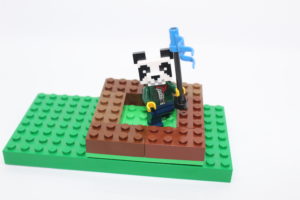Next Step is an ongoing deep journal of the specific steps that are needed to launch, build, and foster different kinds of businesses.
 In our modern, internet drenched age, the owning of domain names is barely one step past branding. Once you have decided on a brand, it would behoove you to make your way to the internet quickly to begin staking your claim.
In our modern, internet drenched age, the owning of domain names is barely one step past branding. Once you have decided on a brand, it would behoove you to make your way to the internet quickly to begin staking your claim.This is not a flash of insight or rocket science. Its probably safe to say that everyone knows what a website is or what a URL is or what a domain is. If not academically, you know it from usage. They are, essentially, your home on the internet, the place where almost everything leads back, most importantly, the place where you totally control the narrative. We’ll come back to this but when you publish on other sites, no matter how good they are, you give up control of how it’s shared, how it’s promoted, how it’s presented, you give up the narrative.
Staking a claim to a domain is an early step that deserves deliberate thought.
What to choose for your domain? Preferably, start with a single concept or word that you can own as your domain and then expand as necessary. This is different than a trademark, however, play your cards right and it will end up being a trademark.
You want something that is easy to remember and, if possible, easy to type. It’ll be associated with the brand and difficult to disassociate if needed. Muscle memory is a real thing for many people or they’ll favorite place the link and not think about the change until, potentially, too late. Like I said, things can be changed, but how many websites do you actually type in the URL to access? More likely you are using favorites or links which would need to be repaired.
A non-exhaustive list of thoughts to consider that I’ve picked up from doing and researching:
Choosing:
- Connect the domain to the brand as much as possible.
- If its not direct usage of the brand, but a piece of the puzzle or part of the brand, make it clear and drive a connection that immediately implies the brand or puts it in the user’s head.
- The URL/website will likely remain for a long time as the more its used and the more that branches off of it, the hard it will be to move it
- You’ll need to live with it, like AIM names of old, avoid inside jokes or stuff you may regret – unless its on brand, of course!
- Make it easy to remember, sure, everyone can copy and paste, but easier to remember is easy to type, is easy to share, is easy to get more visitors.
- Make it as unique as possible. You do no want want someone typing in the wrong, more recognizable competition, plus there are trademark and copyright issues that could develop.
- Think broadly, .com does not really matter as much now as most people find sites through social media, web searches, and direct links. Your options become near exponential when considering alternative top level domains (the “.com” part).
Making:
- Watch for hidden costs in domain purchasing.
- You do not want to be paying for items like modifying WHOIS or RDAP listings as these must be made public anyway.
- Look ahead as far as possible, are there costs to transfer registrars?
- Look deep into the privacy policies and protections. Creating a URL requires transparency, including address and real name. Protect yourself.
Remember, whatever structure you build from the start can improve and help your growth and foundation later but it can also be redone if needed. The bigger the brand and the more used your domain is the harder it becomes to change but it is still possible. There is pressure to do it right but almost everything can be redone or fixed or massaged till it is where you want it. If you have multiple brands from the start then I would certainly pursue each as rapidly as you can.
I would recommend searching for potential domain names on a logged out browser, preferably in incognito mode. This may be a bit “tin foil hat” but there are stories of domains being searched and later those domains are mysteriously taken, and not by the original searcher. Domain “investing” or squatting, depending on your point of view, is a whole business in and of itself with guides, business plans, and everything. Whether there is a way for “investors” to see what people are searching for or something more, it’s best to keep certain moves closer to the chest until action.
I have heard good and bad of many domain registrars. GoDaddy in particular engenders a lot of emotion.
Personally, I have always used DreamHost and been very happy. They are transparent, supportive, affordable, and easy to use. I have every plan to continue using them for all of our various websites and endeavors.
I’d love to here your feedback, additions to the list of thoughts, or preferred hosts!
